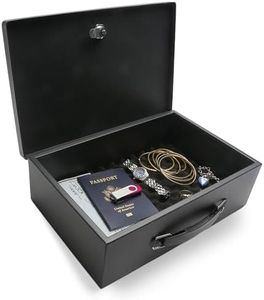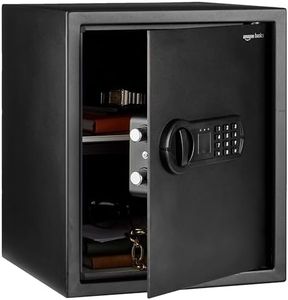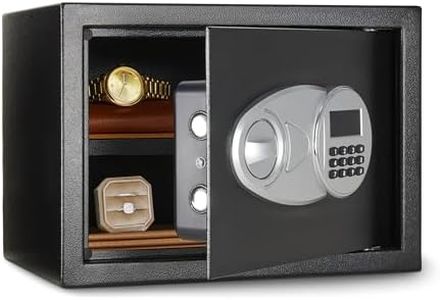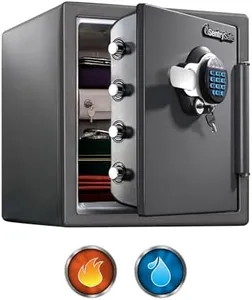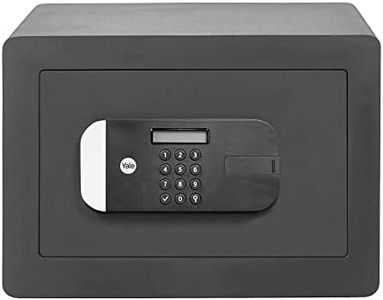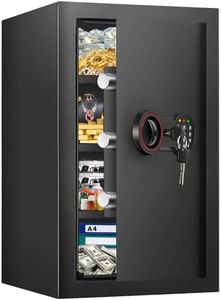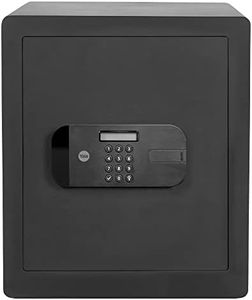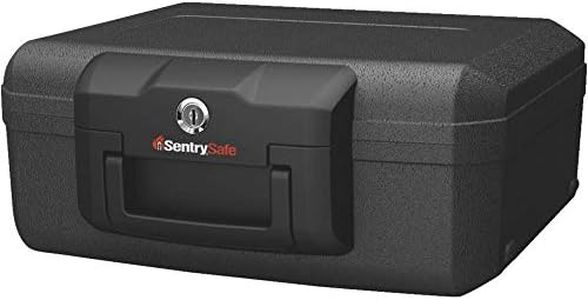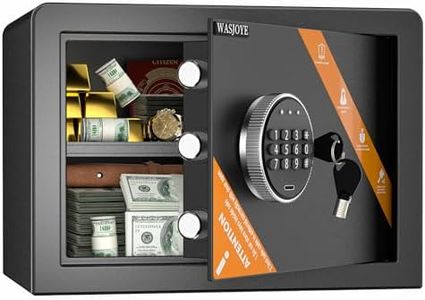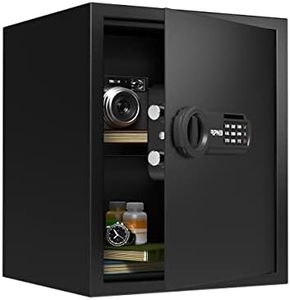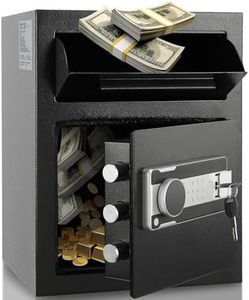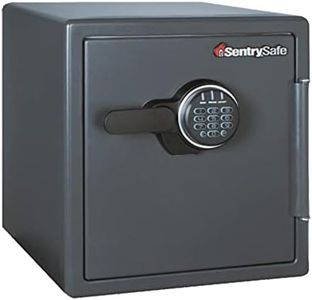We Use CookiesWe use cookies to enhance the security, performance,
functionality and for analytical and promotional activities. By continuing to browse this site you
are agreeing to our privacy policy
10 Best safes
From leading brands and best sellers available on the web.Buying Guide for the Best safes
Choosing the right safe is all about understanding what you want to protect and where you plan to keep it. Safes come in various types, sizes, and security levels, so the first thing is to figure out what you’ll be storing—cash, documents, jewelry, firearms, or other valuables—and what threats you’re protecting against like theft, fire, or water damage. The location is equally important since a safe that’s too big or too heavy for the space won’t be useful, and the type of lock should suit your routines and comfort. Always think about access: who needs to open the safe and how often, as more complex locking mechanisms might slow you down if you need frequent access.Size and CapacityThe size and capacity of a safe determine how much it can hold and where it can be placed. Safes range from small lockboxes for passports and paperwork to large models that fit multiple firearms or bulky valuables. If you only need to store a few items like documents or jewelry, a compact safe is usually enough and easy to hide. If you need to store more or bigger items, opt for a larger unit. Always consider future needs—sometimes it’s wise to choose a slightly larger safe than you currently require to accommodate new valuables.
Locking MechanismThe locking mechanism is the way you open your safe, impacting both how secure your valuables are and how quickly you can access them. Common options are traditional key locks, mechanical combination dials, electronic keypads, and biometric (fingerprint) locks. Key locks are simple but require keeping the key secure. Combination dials don’t depend on batteries but can be slow to open. Electronic keypads are fast and convenient, though they need battery changes. Biometric locks offer quick access for approved users but rely on battery power. Pick a mechanism that balances your need for convenience and security, especially if multiple people need access or if speed is important.
Fire ResistanceFire resistance describes how well the safe can protect its contents from heat and flames. This is measured in how long (in minutes or hours) the interior stays below a certain temperature when exposed to fire. Light fire protection might handle 30 minutes at moderate temperatures, while higher-end models deliver one to two hours—or more—of protection at higher temperatures. If you only want theft protection, this might not matter much, but if you’re concerned about fires, choose a safe with certified fire resistance suitable for your location and risk level. Think about what you’re storing—some documents and electronics are more sensitive and need more protection.
Burglary ResistanceBurglary resistance refers to how difficult it is for someone to forcibly open your safe. Look for construction details like hardened steel walls, reinforced doors, anti-pry features, and special locks. Safes might come with ratings that represent their ability to resist break-in attempts for a certain amount of time or with specific tools. If you’re storing high-value items or live in a higher-risk area, choose a safe with a higher burglary-resistance rating. For items of moderate value, simpler safeguards may suffice.
Anchoring and PortabilityAnchoring options (like pre-drilled bolt holes) allow you to secure your safe to the floor or wall, making it much harder for thieves to remove it. Portability, on the other hand, is a factor for smaller safes–you might need to move the safe or take it with you. If you’re worried about theft, an anchored safe is a better choice, but if you need flexibility, a portable option may be more appropriate.
Water ResistanceWater resistance lets a safe protect your valuables in the event of floods or water leaks. Some safes offer seals and water protection ratings that withstand splashes, sprays, or complete submersion for limited periods. If you store the safe in a basement or an area prone to flooding, water resistance is key. If not, this feature may be less important.
Accessibility and Interior FeaturesThe way a safe opens—like a front door, drop slot, or drawer—affects how quickly and easily you can access or organize your valuables. Interior features such as adjustable shelves, compartments, or interior lighting can help keep items organized and visible. If you have lots of different items or want to keep things neatly separated, look for flexible interior options. If you need fast access or have bulky items, consider safes with wide doors or easy-open designs.
